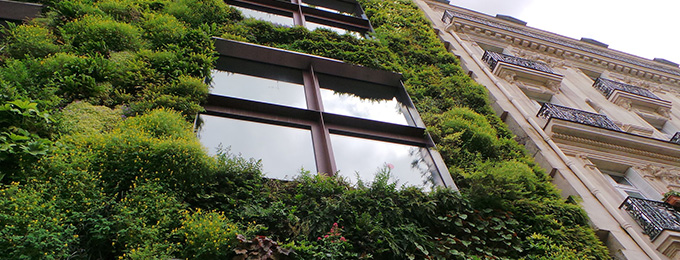The European Commission published more details about the roll-out of the new initiative that will add an artistic facet to the European Green Deal efforts.
On 18 January, the European Commission (EC) outlined a timetable on how the New European Bauhaus should take shape until 2023. EC President Ursula von der Leyen personally introduced the new initiative back in September 2020 during her State of the Union Address and again in October 2020. Borrowing its name from the influential German art school of the 1920s, the New European Bauhaus intends to take an approach similar to its historical role model, in combining the useful with the beautiful. It strives to combine aesthetics with sustainability, thereby supporting the EC’s European Green Deal priority that envisions cutting carbon emissions by 55% until 2030.
The New European Bauhaus will in particular play a role in the main EU initiative to align the built environment with the goals of the European Green Deal: The “renovation wave” strategy sets out the planned effort to significantly increase the energy efficiency of the building stock in the EU (see SwissCore article). This is of major importance to reach the climate goals as buildings are currently responsible for 40% of the total energy consumed in the EU.
The EC intends to create the New European Bauhaus as “a bridge between the world of science and technology and the world of art and culture”. To achieve this, the initiative plans to bring the relevant actors together: Citizens, experts and businesses should closely cooperate to reflect on future living and how to make it more affordable, accessible, and sustainable. The EC intends to bring about nothing less than a “creative and interdisciplinary movement”. The new initiative has already met with interest from experts like Mariana Mazzucato, who was instrumental in developing the mission approach that became part of the Horizon Europe programme. She and her colleagues view the New European Bauhaus as an opportunity for a mission-oriented strategic design agenda to support the European Green Deal.
The EC’s mid-January publication on the New European Bauhaus hints already at key characteristics of the new art movement of the built space: The New European Bauhaus should highlight the values of simplicity, functionality and circularity of materials, while at the same time focusing on comfort and attractiveness for daily lives. The EC plans to support the initiative via calls for proposals and coordinated programmes under the new multiannual financial framework (MFF) 2021-2027. However, no details are given on this at present.
The New European Bauhaus is to take shape in three steps: The first one has already been launched and focuses on co-design. Until summer 2021, contemporary examples will be gathered. A high-level round table with distinguished thinkers and practitioners will be set up to serve as a sounding board for ideas and as “community ambassadors”. The EC hopes that through the process of collecting examples of New European Bauhaus buildings, it would become clear how the initiative can create beautiful, sustainable and inclusive places. The goal of this co-design phase will be a support framework based on EU programmes, including a call for proposals for pilots. The EC also plans to award special prizes, which will be presented in summer 2021 to highlight excellent contemporary examples that combine sustainability, quality of experience and inclusion. The winners will be selected among the examples that are currently collected.
The second “delivery” phase from September 2021 entails the implementation of New European Bauhaus pilots, which will be supported by calls for proposals. A “community of practice” that supports sharing lessons learned from first experiments will be created. Finally, from January 2023 onward – and as a third step – the “dissemination” phase will identify and share good ideas, replicable methods, and prototypes across Europe by making them available to cities, architects and designers. In order to achieve that, this phase will focus primarily on networking and knowledge sharing. Finally, the initiative will support the emergence of lead markets for aesthetic, sustainable, inclusive ways of living.

